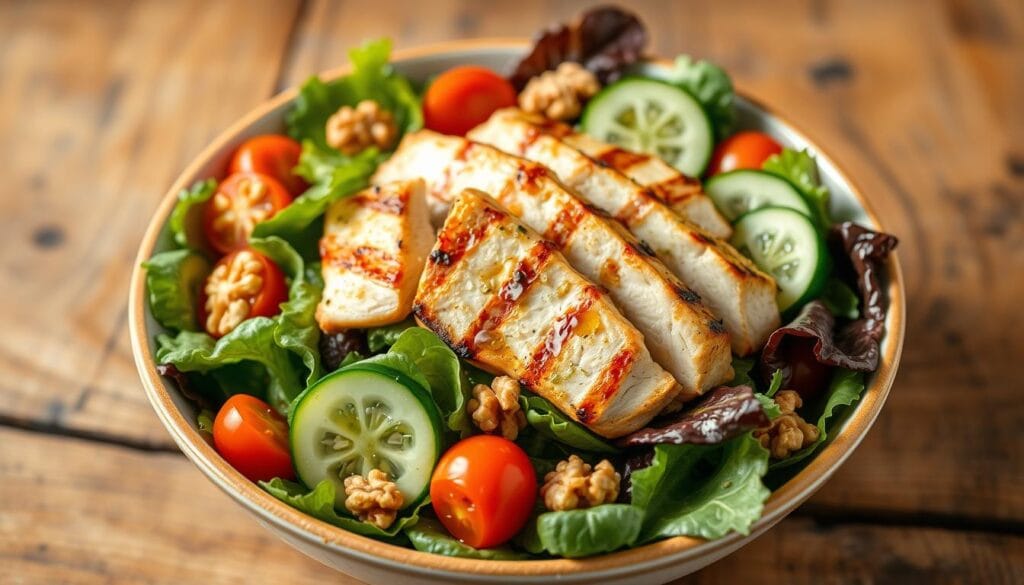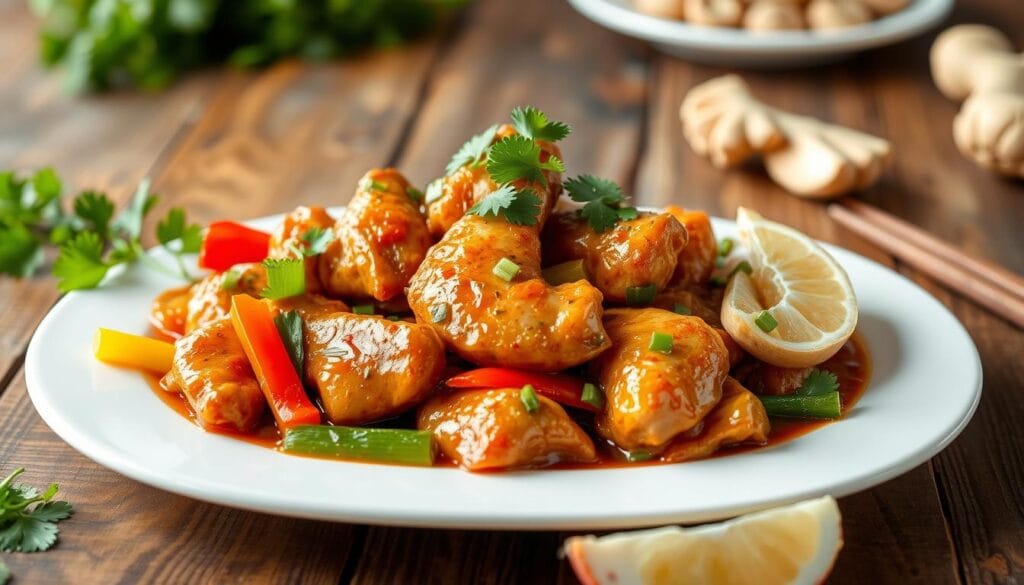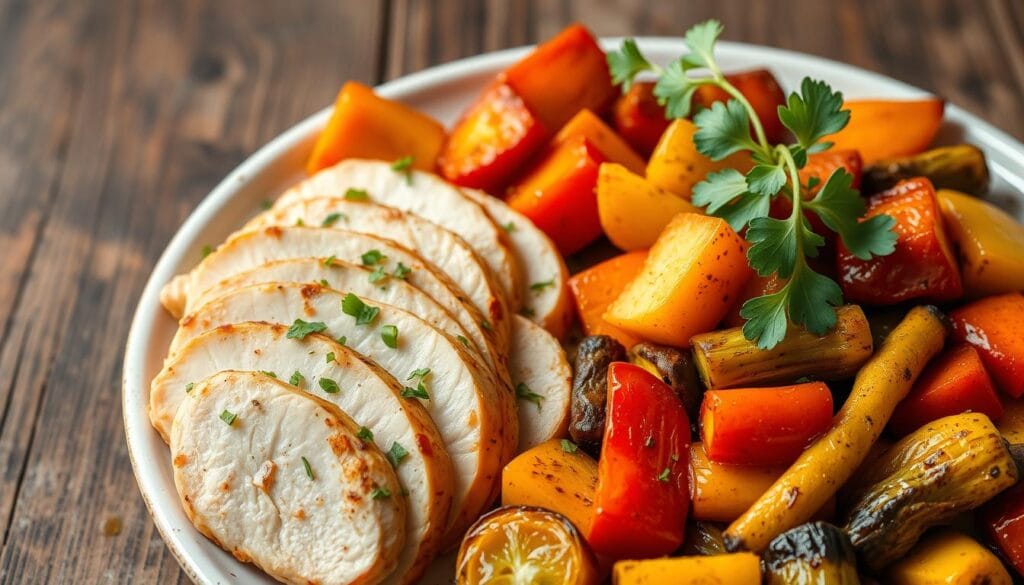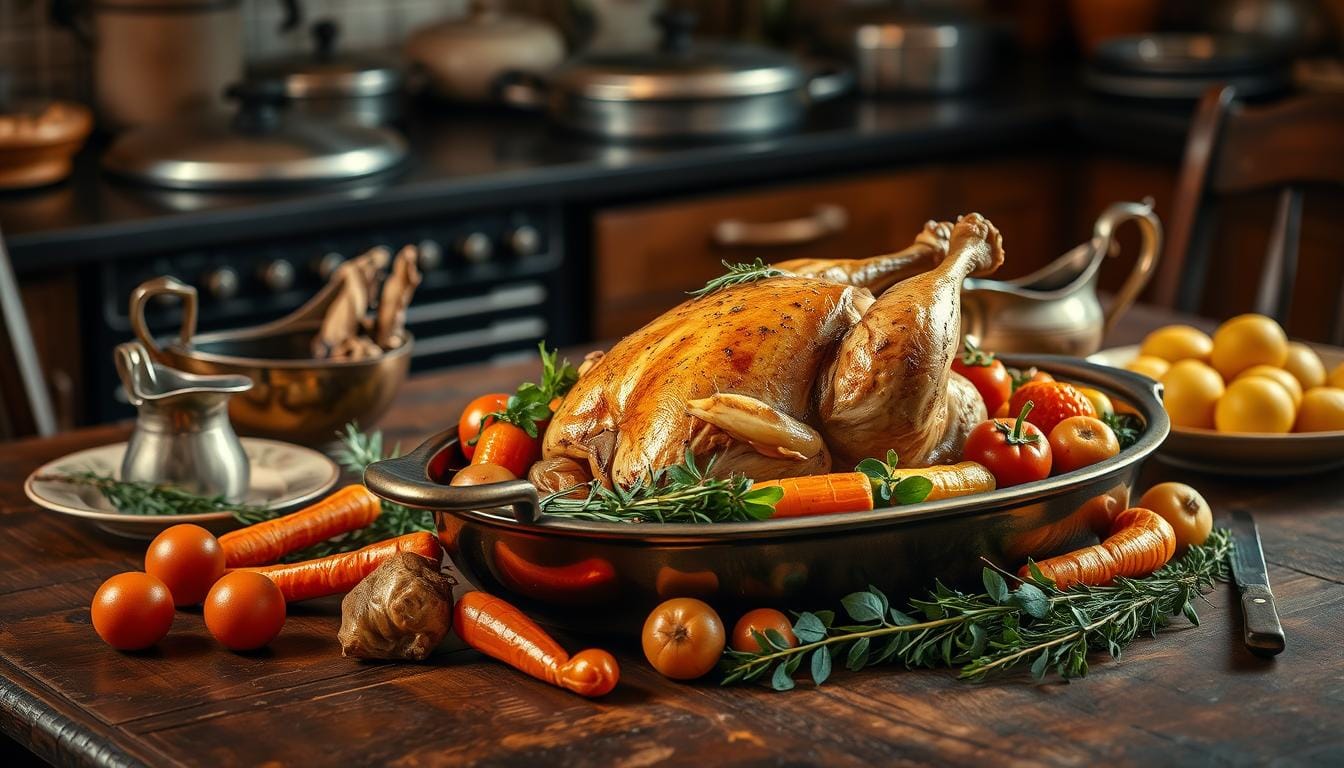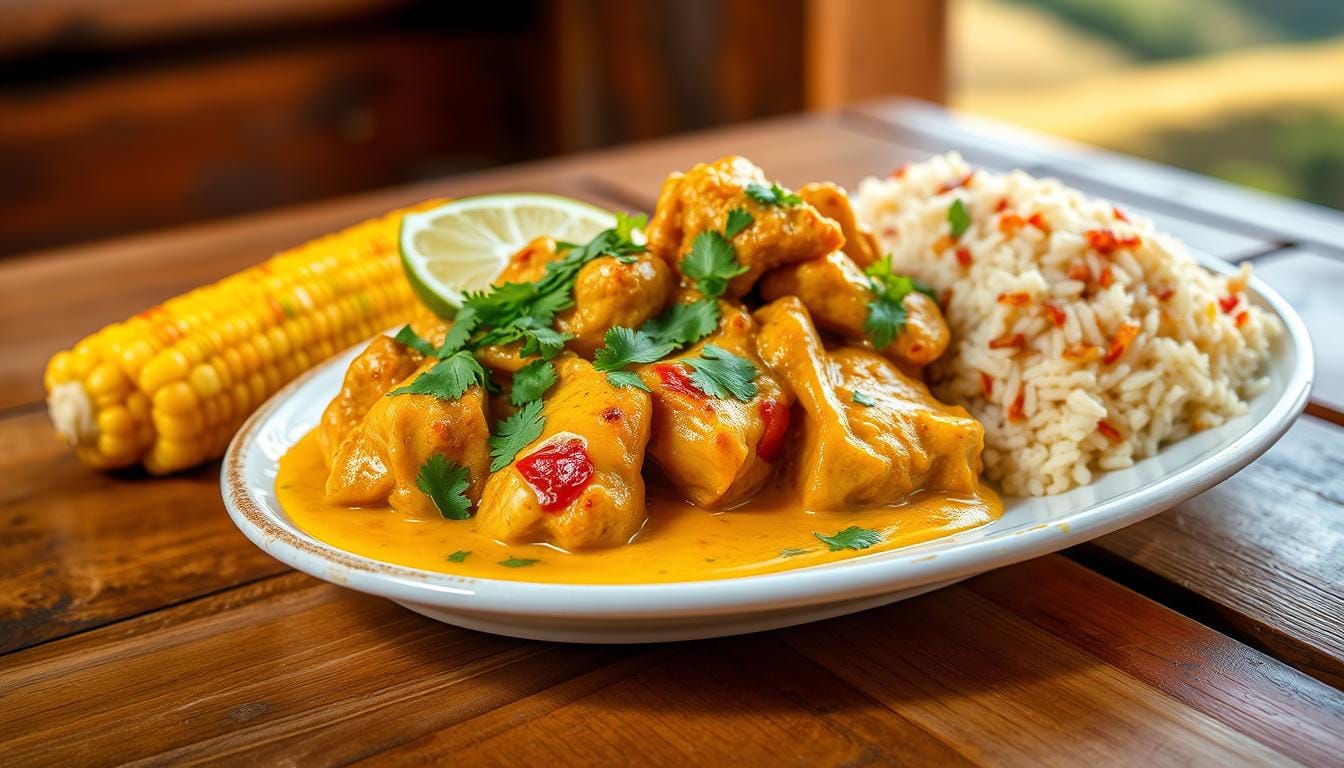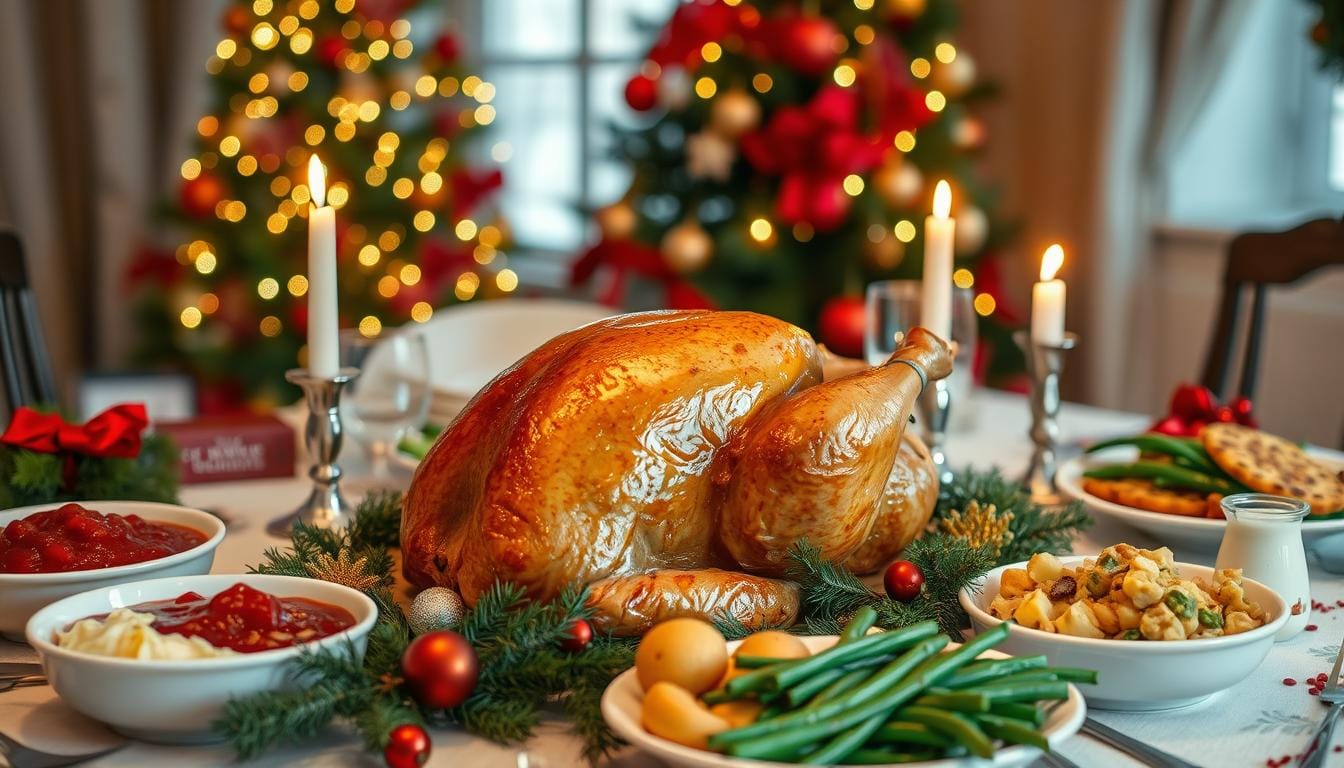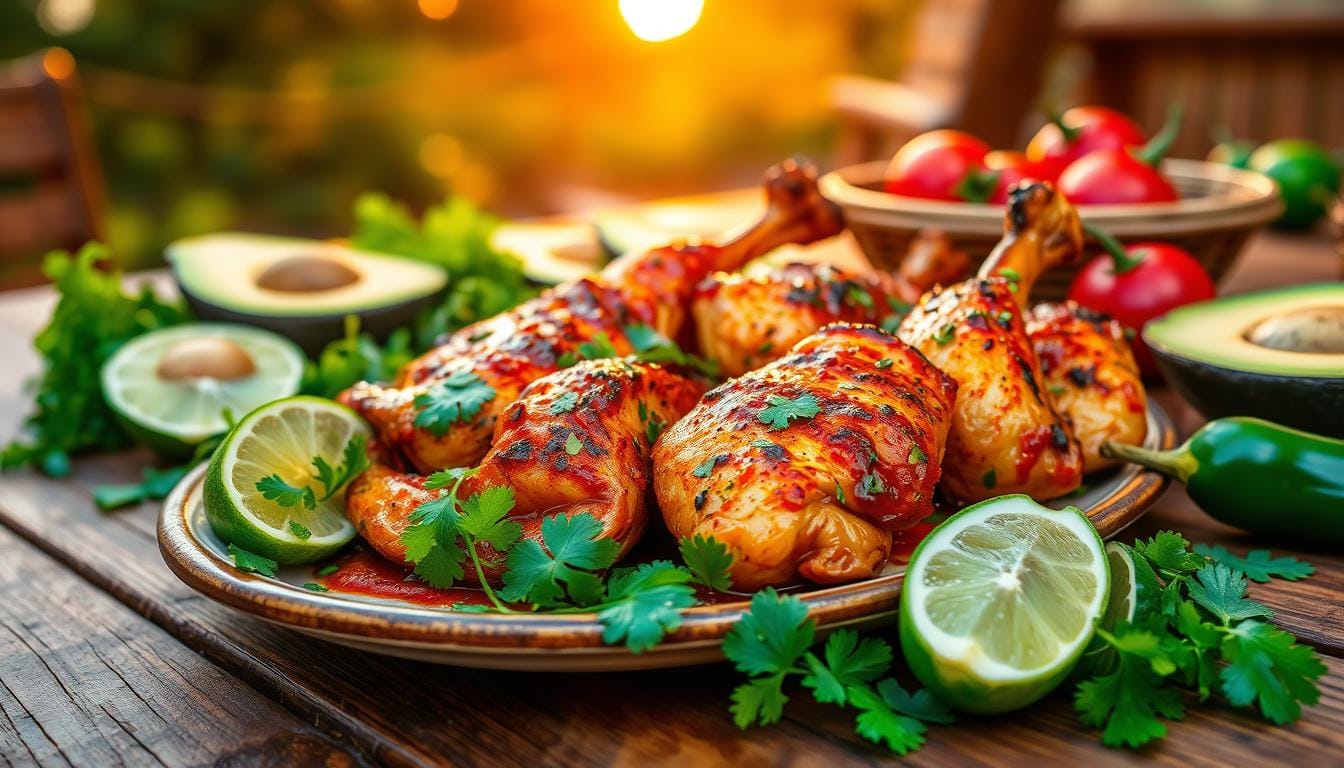Remember those nights? The ones where you’d come home, tired and hungry, and the simple scent of garlic and soy sauce would fill the air? For me, chicken fried rice isn’t just a dish; it’s a memory.
It’s the feeling of warmth and comfort, a symphony of flavors and textures that feels like a hug in a bowl.
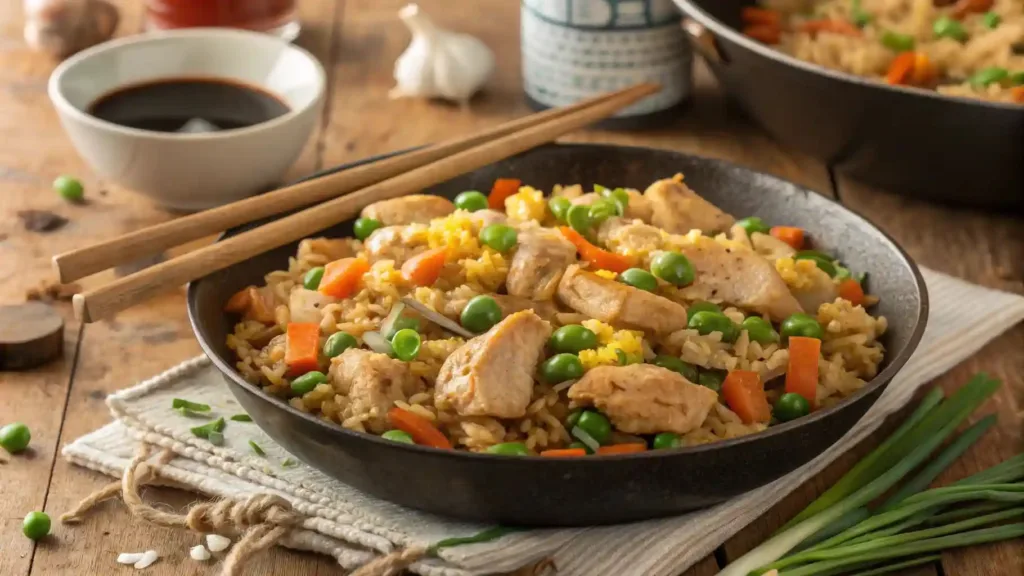
This dish has the power to transform simple leftovers into a culinary masterpiece, a testament to the magic of a well-stocked pantry and a little bit of love.
Join me on a journey to unlock the secrets of this beloved classic and create your own perfect bowl of chicken fried rice.
The Secret to Heavenly Chicken Fried Rice: It’s All in the Prep!
Welcome to the foundation of your future culinary masterpiece. Before a single grain hits the pan, the secret to a sublime chicken fried rice lies in meticulous preparation. This isn’t just about gathering ingredients; it’s about understanding how each component interacts to create that perfect, non-soggy, flavor-packed dish you’re dreaming of.
The Rice is the Star
Let’s get one thing straight: the quality of your finished dish hinges entirely on the rice you use. This is where many home cooks go wrong.
- Why Day-Old, Chilled Rice is a Game-Changer: When rice is cooked and then refrigerated, its starch undergoes a process called retrogradation. This basically means the starches crystalize and harden, causing the individual grains to firm up and separate. When you introduce this cold, firm rice to a hot pan, it reheats beautifully without becoming a clumpy, mushy mess. Freshly cooked rice, on the other hand, contains too much moisture and will steam rather than fry, giving you a result that’s more like a sticky porridge than a delicious, separate-grained chicken fried rice.
- The Best Grain for the Job: While many types of rice can work, Jasmine rice is the reigning champion for a reason. Its slightly nutty aroma and firm yet tender texture make it the ideal candidate. You can also get excellent results with Basmati rice, which offers a long, separate grain. Whatever you choose, ensure it’s cooked according to the package directions, then spread it out on a tray to cool down completely before chilling it for at least a few hours, or ideally, overnight.
The Right Chicken
Your protein source deserves some respect. Using the right cut and preparing it properly will make all the difference in the world.
- Best Cuts: Boneless, skinless chicken thighs are my personal favorite. They have more fat and are less likely to dry out under high heat. Chicken breasts also work wonderfully but require a bit more attention to avoid overcooking.
- The Power of a Simple Marinade: Marinating your chicken before cooking serves a dual purpose: it infuses flavor and tenderizes the meat. A quick marinade of soy sauce, a hint of rice wine, a small amount of sesame oil, and a touch of cornstarch can work wonders. The cornstarch acts as a light coating, helping to protect the chicken from the intense heat and locking in moisture. This step is a small effort with a massive payoff in your final chicken fried rice.
Veggies for Color and Crunch
The vegetables in chicken fried rice aren’t just for looks; they provide essential texture and nutritional value. The classic combination is a perfect starting point.
- Classic Choices: Don’t mess with a good thing. The trio of finely diced carrots, peas (frozen is fine!), and onions is a time-honored tradition for a reason. These vegetables hold up well to the high heat of a wok.
- Size Matters: The key here is consistency. Cut your carrots and onions into small, uniform pieces. This ensures they cook evenly and integrate seamlessly with the rice and chicken. Nothing is worse than biting into a giant, undercooked chunk of onion.
Step-by-Step Guide: How to Cook Chicken Fried Rice Like a Pro
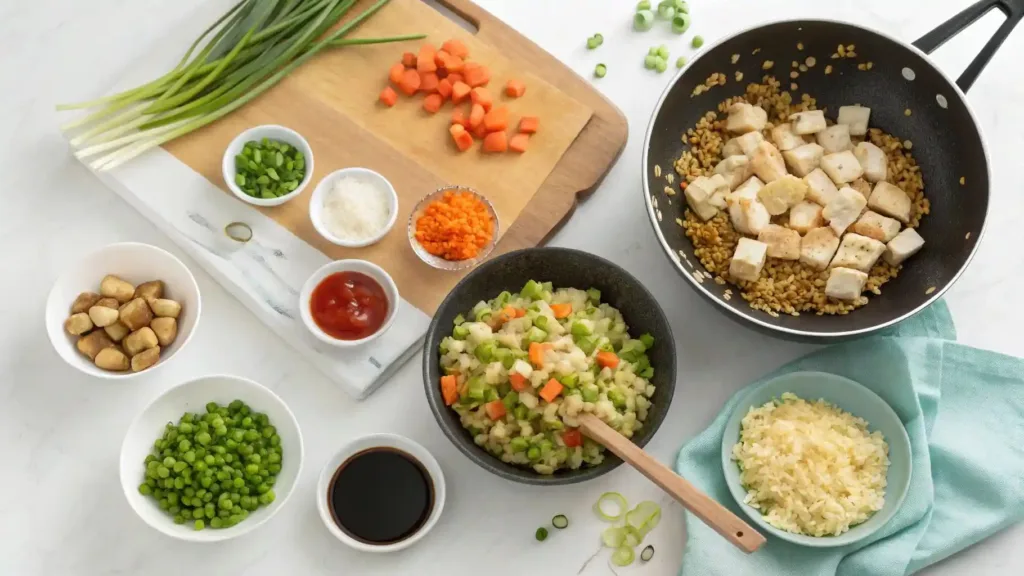
Now that your ingredients are prepped and ready, it’s time to bring everything together. This isn’t just cooking; it’s a dynamic performance. Get ready to embrace the heat and the sizzle.
The Art of the Wok (or Skillet)
While a traditional wok is the ultimate tool for this job, you don’t need to go out and buy one if you don’t have it. A large, non-stick skillet will do a fantastic job.
- Why a Wok? A wok’s unique shape, with its high, sloped sides, allows for even heat distribution and makes stir-frying a breeze. It also creates a phenomenon known as “Wok Hei,” which translates to “the breath of the wok.” This is the complex, smoky flavor that develops when food is cooked in a scorching hot wok.
- The Importance of High Heat: Your wok or skillet needs to be screaming hot before you add any ingredients. This is crucial for achieving that characteristic fried texture and preventing your ingredients from steaming.
A Culinary Dance: The Cooking Process
This is where the magic happens. Follow these steps, and you’ll be on your way to creating the best chicken fried rice you’ve ever had.
- Sauté the Aromatics: Begin by heating your oil in the wok until it shimmers. Add your minced garlic and ginger and stir-fry for about 15-30 seconds until fragrant. Be careful not to let them burn! This simple step builds the essential flavor base for the entire dish.
- Cook the Chicken: Push the aromatics to the side of the wok and add your marinated chicken in a single layer. Let it cook for a minute or two to get a good sear before you begin to stir-fry it. Cook until the chicken is golden brown and cooked through. Remove it from the wok and set it aside. This prevents it from getting rubbery.
- Add the Veggies: Now, add your hard vegetables—the diced carrots and onions—to the hot wok. Stir-fry for a few minutes until they begin to soften. Then, toss in the peas.
- Introduce the Rice: Add your chilled, day-old rice to the wok. This is the fun part. Using your spatula or rice paddle, break up any clumps and stir-fry the rice vigorously, ensuring every grain is coated in the hot oil. You should hear a distinct sizzling sound.
- The Sauce and Scramble: Drizzle your prepared sauce (a simple mix of soy sauce, oyster sauce, and a touch of white pepper) over the rice and stir to combine. Make a well in the center of the rice and add a whisked egg. Let it set for a few seconds, then scramble it with your spatula. Once scrambled, quickly mix it into the rice. This technique ensures the egg is cooked perfectly and distributed evenly.
- Final Touches: Add the cooked chicken back to the pan, along with your chopped scallions and a splash of sesame oil. Toss everything together for one final minute until heated through. The sesame oil, added at the end, provides a wonderful nutty aroma without burning off.
Beyond the Basics: Elevating Your Chicken Fried Rice
You’ve mastered the foundation. Now, let’s talk about how you can make your chicken fried rice truly unforgettable.
Flavor Variations & Add-ins
Your kitchen is your laboratory, and this dish is the perfect canvas for experimentation.
- For the Spice Lover: Add a drizzle of Sriracha or chili garlic sauce along with the soy sauce. For a deeper heat, stir in a pinch of red pepper flakes with your aromatics.
- An Umami Bomb: Want to take your flavors to the next level? Add a teaspoon of mushroom powder or a dash of fish sauce to your sauce mix. These ingredients add a deep, savory richness that is hard to pinpoint but impossible to ignore. For a textural contrast and even more umami, sauté finely chopped shiitake mushrooms with your other veggies.
- Protein Power-Ups: Don’t feel limited to just chicken. This recipe works beautifully with other proteins. Try adding shrimp, leftover roasted pork, or even cubes of pan-fried tofu. The principles remain the same: cook the protein separately, and then add it back in at the end.
Serving and Presentation
Don’t underestimate the power of a beautiful presentation. You’ve put in the work; now let it shine.
- Garnishes are your friend: A sprinkle of fresh cilantro, some toasted sesame seeds, or a drizzle of spicy chili oil can transform the look and feel of your dish. A simple garnish of chopped scallions and a squeeze of fresh lime juice can brighten the entire flavor profile.
- Plate with pride: Serve your chicken fried rice in a large bowl, perhaps with a side of steamed dumplings or crispy spring rolls. A well-plated meal not only looks better but somehow tastes better too.
Common Questions About Chicken Fried Rice (FAQs)
We’ve covered a lot of ground, but you may still have some lingering questions. Let’s address some of the most common inquiries to ensure your success.
Can I use freshly cooked rice for my chicken fried rice?
This is a frequently asked question, and the answer is a firm no. As we’ve discussed, freshly cooked rice has too much moisture, and no amount of high heat will fix the mushy, clumpy texture that results. For the best chicken fried rice, planning ahead and chilling your rice is the single most important step.
What is the best type of oil to use for stir-frying?
The best oil is one with a high smoke point. Think vegetable oil, canola oil, or peanut oil. These oils can withstand the high temperatures required for stir-frying without smoking and burning, which would give your dish a bitter taste. Avoid extra virgin olive oil for this purpose, as its smoke point is too low.
How do I prevent my chicken fried rice from being greasy?
Greasy fried rice is usually a result of two things: using too much oil or not using high enough heat. A common mistake is to add more oil when the rice starts to stick. Instead, trust the high heat and the non-stick surface of your wok or pan. Stir-fry constantly to prevent sticking. If you’re cooking a large batch, it’s better to do it in two separate batches to avoid overcrowding the pan, which lowers the temperature and causes steaming.
Conclusion: A Timeless Classic, Made by You
From a simple weeknight meal to a delicious way to use up leftovers, chicken fried rice holds a special place in the heart of home cooks everywhere. By understanding the science behind the ingredients and mastering the key techniques, you’re not just following a recipe; you’re creating a little bit of magic in your own kitchen. You’re transforming simple components into a dish that is deeply comforting, incredibly satisfying, and uniquely your own.
Now that you have the knowledge and the confidence, it’s time to go forth and stir-fry. We’d love to see what you create. Share your chicken fried rice masterpieces on social media and tag us, or drop a comment below with your favorite secret ingredient. Happy cooking!
